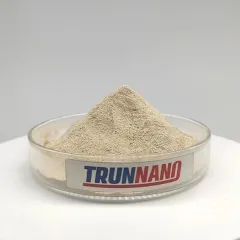- Home
- Products
- Elementary
- Boride Powder
- 3D Printing Powder
- Sulfide Powder
- Oxide Powder
- Carbide powder
- Nitride Powder
- Silicide Powder
- Hydride Powder
- Telluride Powder
- Selenide Powder
- Stearic Acid Series
- Phosphide Powder
- Nanoparticles
- Metal Alloy
- MAX Phase
- Lithium Battery Anode
- Surfactant
- Molecular sieves
- Concrete Admixtures
- Cladding of metals
- News
- Blog
- Contact
- About
Triterpenoid Saponin Air entraining agent
Triterpenoid Saponin (a form of glycosides from tea leaves) is a natural surfactant that performs well. This surfactant can be used extensively in chemical and light industries, as well as pesticides, drinks, beverage, food, dairy, and mining.
Description of Triterpenoid Saponin Air entraining agent:
Chemical structure: Triterpenoid saponins are natural compounds formed by the condensation reaction of various amino acids and sugars. Its complex structure includes many functional groups, such as carbonyl, hydroxyl, and ether bonds. The existence of these functional groups causes triterpenoid saponins to have various chemical properties and reactivity.
Surface activity: This surface activity makes triterpenoid saponins widely used in many fields, such as emulsification, dispersion, wetting and so on.
Emulsification: Triterpene saponins have excellent emulsifying ability and can combine two kinds of immiscible liquids to form a stable emulsion. This property makes triterpenoid saponins widely used in pharmaceuticals, food, cosmetics and other fields.
Wetting effect: triterpene saponins have an excellent wetting effect, which can reduce the surface tension of the liquid, making it easier for the liquid to wet the solid surface. This property makes triterpenoid saponins widely used in pesticide, textile, printing and dyeing fields.
Biological activity: triterpenoid saponins have specific biological activity, can regulate the physiological function of the human body, and have specific medicinal value.
Stability: Triterpenoid saponins are stable at room temperature and do not quickly deteriorate or decompose. However, triterpenoid saponins may be hydrolyzed or decomposed under high temperatures or strong acid and base conditions.
Safety: triterpenoid saponins are relatively safe for the human body and the environment and are generally considered to have no apparent toxic side effects or environmental pollution problems. However, because it may contain impurities or irritants, it is still necessary to pay attention to safety issues when using.
| Product Name | Triterpenoid SAPONIN |
| Appearance | Yellow powder |
| Active matter content | >=60% |
| Foaming power | 160-190mm |
| pH | 5.0-6.5 |
| Surface tension | 47-51 mN/m |
| Water solubility | It is soluble in water |
Applications of Triterpenoid Saponin Air entraining agent:
Pharmaceutical field: Triterpenoid saponins have various pharmacological effects, such as anti-inflammatory, anti-tumor, antiviral, etc., so they are widely used in the pharmaceutical field. For example, ginsenosides and licorice saponins are used to treat cancer, hepatitis, cardiovascular and other diseases. In addition, triterpenoid saponins are also used to prepare drugs, such as the anti-cancer drug paclitaxel.
Food field: Triterpenoid saponins are widely used in food additives because of their antioxidant and fresh-keeping properties. For example, adding triterpenoid saponins to cooking oil can extend its shelf life; Adding triterpenoid saponins to drinks can improve taste and color. In addition, some triterpene saponins also have the effects of lowering cholesterol and regulating blood sugar and can be used as functional food additives.
Cosmetics: Triterpenoid saponins are widely used in cosmetics because of their excellent emulsification, dispersion and wetting properties. For example, adding triterpenoid saponins to skin care products can improve skin moisture retention and increase skin elasticity. Adding triterpenoid saponins to shampoo can reduce hair damage and increase hair shine.
Pesticide field: Triterpenoid saponins have specific insecticidal and bactericidal effects, so they are widely used in pesticides. For example, the total triterpenes of Sophora alpicola have specific gastric toxicity and contact activity against cabbage worms, which can be used to prepare biopesticides. In addition, triterpenoid saponins can also be used as plant growth regulators to promote plant growth and development.
Textile and printing fields: Triterpenoid saponins have excellent wetting and dispersing effects, so they are widely used in textile and printing fields. For example, adding triterpenoid saponins to dyes can improve dyes' dispersibility and coloring effect. Adding triterpenoid saponins to textiles can increase the softness and wrinkle resistance of the fabric. In addition, some triterpene saponins also have antibacterial, mildew and other effects, which can be used to prepare antibacterial textiles.

Production Method of Triterpenoid Saponin Air entraining agent:
Preparation of raw materials: Select suitable plant materials, such as roots, stems, leaves, fruits and other parts, wash and dry.
Extraction: Plant material is placed in an organic solvent and extracted under specific temperature and pressure conditions. Commonly used organic solvents include methanol, ethanol, acetone, etc. An appropriate amount of water or acid-base solution can be added during the extraction process.
Separation and purification: the extraction liquid is filtered, and centrifugal separation and other operations are performed to remove impurities and insoluble matter.
Concentration and drying:
The solution of pure triterpene saponins is concentrated.
The solvent is removed.
The concentrated solution of triterpene saponins is obtained.
Then, the concentrated liquid was dried to obtain triterpene saponins in solid or powdered form.
Quality testing: Quality testing of the triterpene saponins produced, including purity, content, chemical structure, etc. Ensure product quality meets relevant standards and customer requirements.
Packaging and storage: The qualified triterpene saponin products are packaged, and the container with good sealing performance is generally used for packaging to avoid product deterioration and pollution. The storage environment should be kept dry, calm, and ventilated, avoiding direct sunlight and high temperatures.
Packing & Shipping of
triterpenoid saponin
Tea saponin
There are many options for packing, each one depending on your needs.
Tea saponin
powder quantity.
Tea saponin
Packaging: 1kg/bag and 25kg/barrel or according to your request
Tea saponin
shipping:
It could be sent out by air or sea as soon as payment receipt is received.
Inquiry us
PREVIOUS Concrete Admixtures
Concrete Foaming Agent Lightweight Concrete Solutions
NEXT Concrete Admixtures